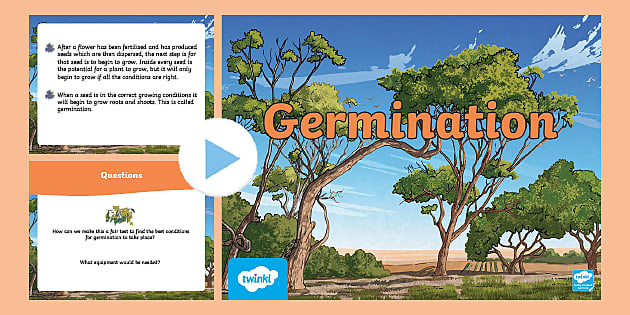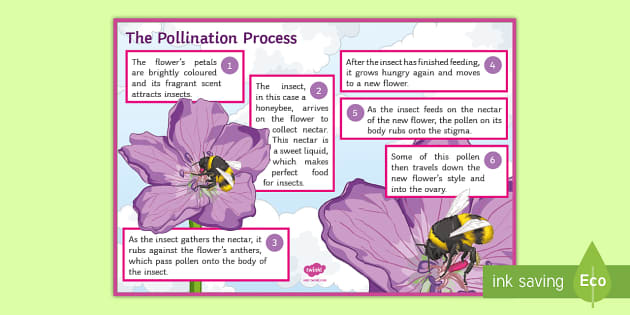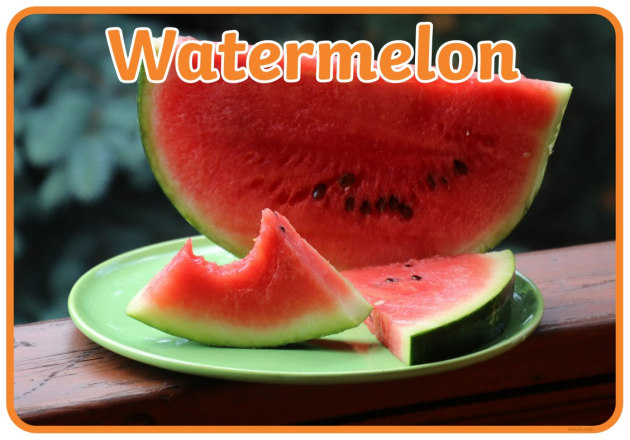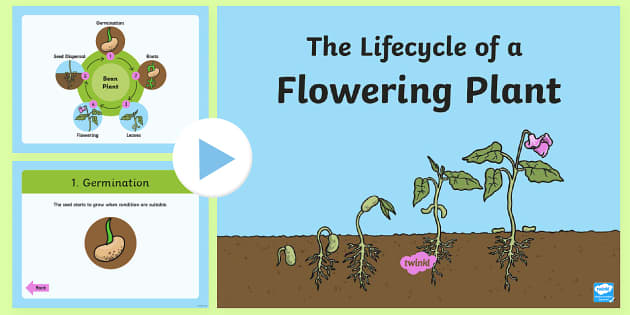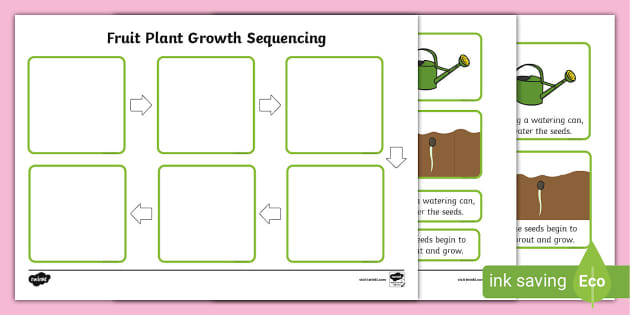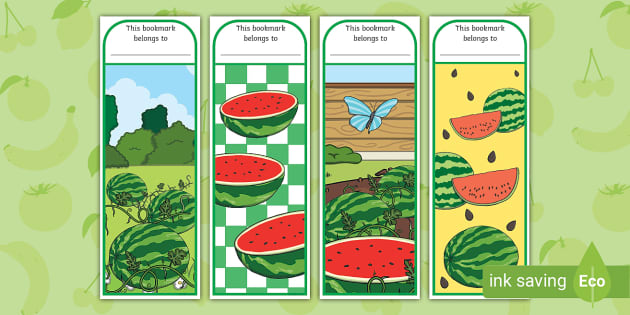

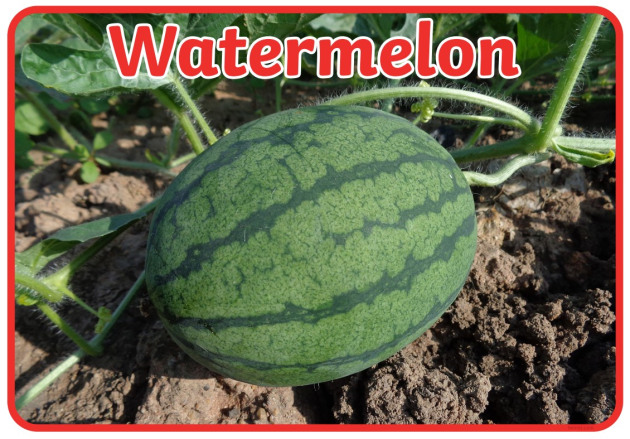
Have you ever eaten a lovely watermelon and wondered where it came from, and how it grew? Like all other living things, the watermelon has a life cycle. This is the collective name for all the life stages a living thing goes through as it grows and reproduces. The life cycle starts again with each new generation of a living organism.
The watermelon is a plant, so its life cycle looks a bit different from the life cycle of an animal. It takes just three months for a watermelon to complete its life cycle! Let’s take a look at the different growing stages a watermelon goes through in its lifetime.
Every watermelon starts life as a little brown and black seed, approximately 1.25cm in length. Inside this little seed is a tiny baby watermelon that just needs the right conditions to grow.
To start the growth process, the watermelon seed needs to be planted in soil. The soil will provide some of the important nutrients the baby plant needs, but it will also need water and sunlight in order to grow.
Germination is the process of the seed beginning to grow into a plant. It can take between four and 14 days for a watermelon to complete the germination process.
During this stage, the seed will sprout several different features. These are:
The germination stage is when the watermelon plant is most vulnerable. It will need care and protection, and just the right amount of water, to go on to the next stage of development.
The watermelon seeds are now seedlings, as they have sprouted upwards and downwards. They’re now entering the vegetative growth stage, where they start to turn into proper plants.
At this stage, the watermelon will sprout its first true leaves. Four or five larger leaves will replace the cotyledons, enabling the plant to become more efficient at performing photosynthesis. As these true leaves have a larger surface area, they can absorb more light from the sun, which means they can produce more food for the plant. The leaves are dark green in colour, and, when they first emerge, they’re covered in a prickly coating that will disappear as the plant develops.
Over the next two weeks, these leaves will become bigger and stronger, and the watermelon plant will grow its main vine. This vine can grow to between three and four metres long! New leaves will appear along the vine as it grows, and more vines can also sprout from the main vine. This process is known as branching. The watermelon vines grow horizontally, sprawling along the ground.
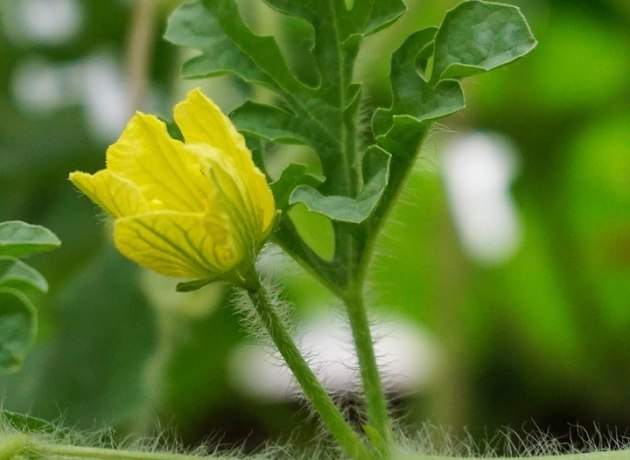
About 60 days after it was planted, the watermelon plant will produce its first flowers. The flowers are yellow and star-shaped, with five petals.
The male flowers appear first. These have an anther, which is where the pollen is found.
The female flowers will start to appear about 10 days after the first male flowers. Female flowers have a stigma, which will collect the pollen from the male flowers. The female flowers also have a small swollen section of the stem just below the flower. This is the ovary, the part of the plant that will develop into a watermelon if the plant is pollinated. Only female watermelon flowers can produce fruit.
At this point, pollination needs to occur. Watermelon flowers can’t pollinate themselves, so they need the help of pollinating insects such as bees. The bee lands on a male flower to feed, gathering some of the pollen from the anther as it does so. When the bee then lands on a female flower, the pollen is distributed into the stigma, fertilising the flower and enabling it to grow into a watermelon fruit.
There is only a very short window for this process to take place, as each watermelon flower only blooms for one day!
This is the really exciting part of the life cycle of a watermelon, where a brand new fruit begins to grow! If the female flower has been pollinated, the swollen part of the stem underneath the flower will start to grow larger, and begin to develop into a watermelon. It takes about a month for the fruit to grow and ripen.
The watermelon fruit is technically a berry! It has a hard, thick skin, which is called a rind. This protects the soft flesh inside.
As the watermelon develops and ripens, it will also produce seeds inside the fruit.

After about a month from pollination, the watermelon fruit will be fully grown. If you want to test its ripeness, give the fruit a tap. If it’s ripe, it will make a hollow sound. The part of the fruit that touches the ground should also be yellow in colour if the fruit is ripe.
Once you’re happy that the fruit is ripe, it’s time to harvest it by gently snipping it off the vine. And now for the fun part - eating the watermelon! You’ve seen it go through its complete life cycle, and now it’s time to enjoy the goodness that nature has produced. Don’t forget to remove the seeds and save them, though! These can be planted next season, and the life cycle of the watermelon can begin all over again.
If you’re teaching your classes about the life cycle of a watermelon, or life cycles in general, there are plenty of great resources here on the Twinkl website that can help make things easier for you. Here are a few suggestions to get you started.
You can give your learners a great introduction to this topic with this colourful Life Cycle of a Flowering Plant PowerPoint. It details each stage of the process with clear illustrations, making it really engaging for your learners.
To help children remember the different growth stages a plant goes through, you can display this fantastic Flowering Plant Life Cycle Display Poster in your classroom. It’s ideal for teaching them about the life cycle of a watermelon, or any other flowering plant.
This Plant Growth Sequencing Activity is perfect for helping children consolidate their learning on this topic. It asks children to put the different growth stages of a fruit plant in order, so it will tie in really well with your teaching on watermelons!
And, if your classes really love watermelons (and why wouldn’t they?) they’re sure to like these Watermelon Bookmarks! Featuring colourful illustrations, they’re a great reminder of the different stages of the watermelon life cycle.
All our resources are designed by experienced teachers, for teachers, and they align with the curriculum, so they’re ideal for saving you time on lesson planning.
Looking for more great life cycle teaching ideas? Take a look at the Twinkl video below.
 Home
Home  Membership
Membership  Customer Support
Customer Support  Create
Create  Blog
Blog 


